Can Universities Help “Build Back Better” in Education? The Socially Embedded University Responds to the Covid-19 Pandemic
- Graduate School of Education, Harvard University, Cambridge, MA, United States
The high impact disruptions in the external environment caused by the Covid-19 pandemic revealed the socially embedded character of many universities around the world. University collaborations with schools during the pandemic suggest that they are institutions open to their external environment, capable of learning from and with their environment, and capable of influencing their external environment, helping to address significant social challenges. Drawing on a non-probabilistic survey administered to a convenience sample of 101 universities in 21 countries, I examine how they built partnerships with schools to sustain educational opportunity during the pandemic. The results are informative of the evolving nature of higher education and its mission. They illustrate the responsiveness of universities to societal needs. The findings show that universities are socially connected to their surrounding context, and that they see themselves as engines of social innovation at a time of great unexpected need. The study found the majority of universities to be engaged with schools supporting education during the pandemic. They see such engagement as part of their mission and strategy, even though they perceive it as challenging. Most of such engagements do not have a formalized “theory of action,” but are evolving as the crisis created by the pandemic itself evolved. While such engagement during the pandemic builds on pre-existing engagements with schools, the response during the pandemic provided an opportunity to integrate different efforts across various units. The majority of the universities in the study had a school of education, and about half have a program of pre-service teacher education and few of the collaborations established during the pandemic were new, most were based on pre-existing collaborations. In two thirds of the cases the collaborations with schools during the pandemic were initiated by University leaders. Most of the collaborations consist of developing alternative delivery channels and supporting teachers in developing new skills to teach remotely.
A Major Global Disruption and the Need to “Build Back Better”
The effects of the 2020 Covid-19 pandemic could make the world less inclusive, less stable, and less sustainable during the coming years (World Economic Forum, 2021). These effects include those on people’s lives and health, including mental health, as well as the economic consequences of infection or death to those directly affected and to their dependents. Indirect effects include jobs and income loss, mobility restrictions, disruptions to schooling, and severe limitations to other forms of association and interaction. A considerable burden for governments will be the financial toll created by funding the costs of the public health response to the pandemic, as well as the costs of the economic relief to individuals and businesses which some governments provided to mitigate the impact of the disruption to work and business (World Bank, 2021).
The scale of these disruptions caused by the pandemic is unprecedented, likely to cause a global economic recession not seen since the Great Depression (Reinhart and Reinhart, 2020). A United Nations report explains that the Pandemic has exposed and augmented pre-existing vulnerabilities, and that recovering from its impact requires not just restoring the conditions which existed prior to the pandemic, but “building back better,” pursuing the global development agenda, as articulated in the UN Sustainable Development Goals (United Nations, 2020: p. 1).
“Recovery is an opportunity to address the climate crisis, inequality of all kinds and gaps in our social protection systems. Instead of going back to unsustainable systems and approaches, we need to transition to renewable energy, green infrastructure, sustainable food systems, social inclusion, gender equality, and stronger social safety nets, universal health coverage, better preparedness for health emergencies and multi-hazard risks.” (United Nations, 2020: p. 8).
However, “building back better” will be especially challenging because the foreseeable financial austerity and because it involves collective action problems, not well-addressed by market forces or by the current democratic politics in contexts of low trust and intense polarization. Addressing climate change, for instance, is likely to require a number of coordinated changes in government, private industries and individual behavior, changes that have so far proven elusive (IPCC, 2018).
Universities may be well-positioned to contribute to facilitating the collective action necessary to “build back better” given their scale, capacity and the multifaceted nature of their operations, including their capacity to study complex topics and to translate such knowledge into ideas for policies or societal reform, technologies and other services. Furthermore, engaging in the task of building back better would help universities align their core missions of research, teaching and outreach in synergistic ways that would underscore their value to society.
Articulating the social relevance of universities is particularly important as such relevance is increasingly challenged in many countries. In the United States, for example, the percentage of the adult population that thinks colleges and universities have a positive effect on the way things go in the country decreased from 60% in 2012 to 50% in 2019, whereas the percentage who thinks colleges and universities have a negative effect increased from 26 to 38% during the same period (Parker, 2020).
Methods
Relying on a survey to senior administrators and faculty in 101 universities, administered in June of 2020, this article examines Universities’ role in building back better, as they engaged with schools and school systems during the Pandemic. The online survey was distributed with the assistance of organizations that convene universities including the Latin American Scholarship Program of American Universities at Harvard University, the Qatar Foundation for Education, Science and Community Development, colleagues from 25 universities around the world collaborating in a cross-national study of the engagement of universities with schools during the pandemic and other collaborators of the author.
The design of the study is not probabilistic, but an intentional survey on a convenience sample of respondents in 21 different countries, in public and private universities adequate to the goal of characterizing responses for the institutions in question, but inadequate to estimate whether those are representative of the population of over 28,000 universities around the world. Nonetheless, this study on a sample of convenience allows an exploration into the responses of these universities during the pandemic in assisting educational institutions. The survey was developed specifically for this study, drawing on insights from the discussions that were part of the cross-national study mentioned earlier, drafts of the survey received feedback from those colleagues collaborating on that study. The survey is included in Appendix A.
A total of 101 faculty and administrators responded to the survey, half of them from public and half from private institutions, from 21 different countries, as shown in Table 1.
Impact of the Pandemic on Educational Opportunity
In person learning was disrupted as schools and universities adopted physical distancing measures. On March 3rd, UNESCO reported that school closures in thirteen countries had interrupted the education of 290 million students around the world (United Nations Education Science and Culture Organization, 2020). By the end of March 2020, three weeks after the World Health Organization had declared the outbreak, national school closures had impacted 1,581,173,934 learners. All remaining learners, out of a total of 1,712,374,616, had been impacted by localized school closures (United Nations Education Science and Culture Organization, 2020). By the end of July 2020, only a very small number of schools and universities had reopened. Soon after, most schools and universities around the world suspended in person instruction, many of them adopting alternative modalities of education delivery, including using online learning, relying on radio, television, mobile applications and printed materials.
Educational institutions, from pre-schools to universities, used a variety of means to sustain some form of educational continuity amidst the challenging conditions caused by the distancing requirements. For most institutions this involved very rapid design and implementation of alternative means of delivery, and continuous adaptation based on rapid learning about the effectiveness of the approaches deployed.
In effect, schools and universities responded to the disruption caused by the pandemic in a massive global exercise in innovation to sustain educational opportunity through alternative delivery channels. These efforts quickly revealed that not all students had the same access to technology and other supportive conditions that would allow them to learn online, for many institutions the first and most obvious approach to sustaining opportunity. Other students lacked the self-study skills to effectively learn online and to learn more independently than they were accustomed to. These innovative efforts revealed also skill gaps among teachers to teach remotely (Reimers and Schleicher, 2020).
In order to expand the institutional capacity to meet the unprecedented education crisis created by the pandemic a number of education authorities invited collaboration from universities. The secretary of education of São Paulo, Brazil, for instance developed a partnership with the State University of Juiz de Fora, to build a formative monitoring system that would help teachers and school leaders assess student engagement and learning as they learned remotely. Similarly, Colombia’s Minister of Education, built on a pre-existing partnership with a University to support online learning, to create a robust multimedia platform to support remote instruction. The Chilean government invited the two main universities in the country –the Universidad de Chile and the Pontificia Universidad Catolica de Chile—to join in a social roundtable that would advise and assist the government on a number of areas of pandemic response, including education.
Just as it was reasonable for school and system leaders to ask universities for help in sustaining education during the Pandemic, some universities also engaged in such a task on their own as part of their mission to contribute to the development of the communities of which they are a part, through research, education and extension.
Results
Even though universities see engagement with schools as challenging, most pursue it and see it as part of their mission. Two in five respondents indicated that elementary and secondary schools are not particularly receptive to collaborating with universities, while a third of the respondents disagreed with that idea.
Most respondents see engagement with pre-collegiate education a part of their mission. When asked whether they agreed with this statement: “This University does not see engagement with elementary and secondary schools as part of its mission” only 20% of the respondents expressed total or partial agreement, with 50% expressing total disagreement and 14% expressing some disagreement. Consistent with this, sixty nine percent of the respondents report that there is a tradition in the University of partnering with primary and secondary schools for research or extension.
Fifty nine percent of the universities offer a program of pre-service education of teachers, and 74% of them have a department or school of education.
Sixty four percent of the respondents report that after the Covid-19 pandemic broke out University leaders or faculty engaged in conversations with institutions involved in elementary and secondary education to explore whether they would welcome or require support from universities to continue to educate during the Pandemic and sixty one percent indicate that the University is engaged with elementary and secondary schools during the Covid-19 Pandemic to support those schools in continuing to teach during the Pandemic.
The type of school with which universities have developed partnerships to support instruction during the Pandemic are presented in Table 2. Most University school partnerships involve schools which are part of the same “system” as the University, or schools with which universities had partnerships predating the pandemic. Less frequent are partnerships with schools with which no prior relationships existed, as well as supporting local, state or national level education authorities.
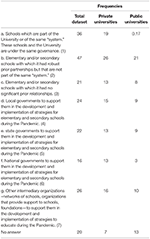 Table 2. If the University has been engaged with elementary and secondary schools during the COVID-19 Pandemic, which type of schools did this include? (more than one response is possible per University).
Table 2. If the University has been engaged with elementary and secondary schools during the COVID-19 Pandemic, which type of schools did this include? (more than one response is possible per University).
Most of these collaborations were initiated by the University, or jointly by the University and the schools. Very few of them were initiated by the schools themselves or by governments.
The efforts during the pandemic were an opportunity to integrate pre-existing collaborations across units in the University and schools, according to 60% of the respondents. Half of the respondents see the collaborations between schools and the University as opportunities to help students in the University gain valuable skills. More than half of the respondents see the collaborations with schools as opportunities to foster collaboration across various departments in the University.
The collaborations focused primarily on designing products or making available resources and training teachers or staff in order to would support educational continuity during the pandemic as shown in Table 3.
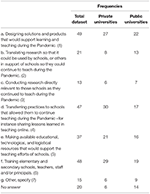 Table 3. What was the focus of the collaborations of the University with primary and secondary schools included (more than one responsible is possible per University).
Table 3. What was the focus of the collaborations of the University with primary and secondary schools included (more than one responsible is possible per University).
Over half of the respondents report that there were many challenges in establishing these collaborations with schools. While the decision to initiate the collaborations involved principally senior University leadership (presidents and deans) and faculty, the implementation of the collaboration involves a broader range of constituents, including faculty, staff and students. The initiative involves, to a similar extent, the office of the president and provost, the office of outreach and extension, the school of education and other departments or faculties. In most cases these efforts are funded by the University. The primary motivation to undertake the collaboration was to be of service to society (66% of the cases). In the great majority of cases this collaboration is aligned with the University’s strategic plan.
When asked if there is a clear strategy or theory of action guiding these collaborations, the responses are equally divided between those where there is a clear strategy (about a third of the cases), those where there is an emerging strategy, and those where there is no strategy at all as shown in Table 4.
 Table 4. Is there a strategy, or a “theory of action” or “logical framework” guiding these collaborations of the University with elementary and secondary schools?
Table 4. Is there a strategy, or a “theory of action” or “logical framework” guiding these collaborations of the University with elementary and secondary schools?
In most cases (60%) the collaborations were designed as rapid prototypes which are being improved on the basis of experience. In a similar proportion of cases there is a monitoring system that allows continuous improvement. While there are monitoring and formative evaluations in three fourth of the cases, impact evaluations or academic research based on those collaborations are less frequent, as seen in Table 5.
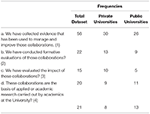 Table 5. Have these efforts been evaluated in any way? (more than one response per University is possible).
Table 5. Have these efforts been evaluated in any way? (more than one response per University is possible).
Discussion
For the universities included in our study, the high impact disruptions in the external environment caused by the Pandemic provided an opportunity to contribute to society assisting schools and school systems in finding ways to sustain education during the crisis. That this was done in this disruptive context speaks to the nature of the University as an entrepreneurial, socially embedded learning organization. The engagement of universities in the redesign of learning and teaching systems in response to the socially distanced context created by the pandemic fits squarely within the contemporary interest on more effective and more open learning systems in universities, and outside them (Scott, 2020).
The strategy guiding these efforts is incipient, as only a third of the respondents indicated that these collaborations were guided by a clear theory of action, while an additional third of respondents indicates that such theory of action is “emerging.”
These results suggest that universities are learning organizations that take outreach to society as an important aspect to their mission. As such, they are also open systems, in interaction with their environment with the capacity to discover changes that can influence them and with the capacity to change in response to those changes in the external environment (Von Bertalanffy, 1938; Argyris and Schon, 1978; Birnbaum, 1988; Senge, 1990; O’Connor and McDermott, 1997; Senior and Swailes, 2010).
The collaborations with schools that Universities developed to sustain educational opportunity further suggest that they not only have the capacity to adjust to changes in the external environment, but to create alternative futures. Through their functions in teaching, research and extension, universities can very much imagine and build a future. They are indeed capable of “building back better.” While this study examined a narrow domain –school education—in which to examine such role for the University, there are multiple other areas in which similar forms of social engagement are possible, from addressing climate change or public health, to social inequality or poverty alleviation, to democratic governance or urban renewal.
Might this engagement of universities collaborating with schools to sustain learning during a time of crisis anticipate a greater emphasis in its social role and value? High impact events of this sort in the past have influenced how universities interpreted, and re-created, their mission. For instance, the second global wave of democratization after World War II and the third wave beginning in the mid-1970’s (Huntington, 1993) led to universities embracing the goal of expanding access with unprecedented vigor. It is too early to tell whether the engagements of universities with schools during a time of crisis described in this paper foreshadow a reinterpretation of the purpose of the University, but the findings suggest that universities are indeed socially embedded institutions.
A century ago, the idea that research in universities was carried out by researchers working in the isolation of the ivory tower, was replaced by the argument that research was the product of researchers interacting with society, the related argument of the “Triple Helix” explained research as the result of close collaboration between universities, industry and government (Engwall, 2020: p. 5). The concept of the “Triple Helix” is the foundation of the idea of the “entrepreneurial University,” the University which serves as an engine of societal improvement, and the findings in this study are congruent with that view of the University.
This entrepreneurial, socially embedded University, is the idealized model of the American University which contemporary discourse on “world class” universities propagates as desirable, a University with porous borders with society, and open to social change and its impact (Ramirez, 2020: p. 131).
University engagement has become so prominent that it is now considered a key component of national or state policymaking, a tool of institutional profiling, and an indicator of performance as part of the broader accountability and system steering agendas (Goddard et al., 2016).
This engagement of universities with pre-collegiate institutions to support education during the global pandemic addresses the democratic imperative which some authors argue is part of the important mission in our times:
“Put most simply, the urgent task before us to reinforce, and maybe reforge, the links between higher education and democracy which, perhaps too complacently, was taken for granted in the twentieth century in the age of mass higher education, now drawing to the close. The twenty-first century University needs to be an open institution–spatially, by opening up closed-off, policed corporate-like academic precincts; scientifically and academically, by embracing open knowledge systems and welcoming new (and challenging) knowledge traditions (and rejecting the exclusionary and hierarchical tendencies of performance and raking regimes- and, maybe, the seductive discourses of “excellent” and “world-class”); and socially, by meeting the needs of everyone, not just of enlarged elites.” (Scott, 2020: p. 111).
As the responses of the universities examined in this study show, there is much that such opening of the University to society can contribute at a time of great need, and in doing so help answer the increasing questions about its social value.
Data Availability Statement
The raw data supporting the conclusions of this article will be made available by the authors, without undue reservation.
Author’s Note
The survey on which the data in this article are reported was conducted as part of that larger study of university-school collaborations and all contributors to that project provided helpful feedback to a draft of the survey and assisted in distributing it. The analysis of the data presented in this article, and the responsibility for the interpretation of the data on which this article is based are my own.
Author Contributions
The author confirms being the sole contributor of this work and has approved it for publication.
Conflict of Interest
The author declares that the research was conducted in the absence of any commercial or financial relationships that could be construed as a potential conflict of interest.
Acknowledgments
I gratefully acknowledge the collaboration with Francisco Marmolejo and with colleagues in 20 universities in a study of university-school collaborations during the pandemic. The findings from that larger project are presented in Reimers and Marmolejo (in press).
Supplementary Material
The Supplementary Material for this article can be found online at: https://www.frontiersin.org/articles/10.3389/frsus.2021.636769/full#supplementary-material
References
Argyris, C., and Schon, D. (1978). Organizational Learning: A Theory of Action Perspective. Reading, MA: Addison-Wesley.
Birnbaum, R. (1988). How Colleges Work. The Cybernetics of Academic Organisation and Leadership. San Francisco, CA: Jossey-Bass Publishers.
Engwall, L. (2020). “The governance and missions of universities,” in Missions of Universities. Past, Present and Future, ed L. Engwall (Cham: Springer), 1–20. doi: 10.1007/978-3-030-41834-2_1
Goddard, J., Hazelkorn, E., Kempton, L., and Vallance, P. (2016). The Civic University: The Policy and Leadership Challenges. Cheltenham: Edward Elgar Publishing Limited. doi: 10.4337/9781784717728
Huntington, S. P. (1993). The Third Wave: Democratization in the Late Twentieth Century. Norman: University of Oklahoma Press.
IPCC (2018). “Summary for Policymakers,” in Global Warming of 1.5°C. An IPCC Special Report on the Impacts of Global Warming of 1.5°C Above Pre-industrial Levels and Related Global Greenhouse Gas Emission Pathways, in the Context of Strengthening the Global Response to the Threat of Climate Change, Sustainable Development, and Efforts to Eradicate Poverty, eds V. Masson-Delmotte, P. Zhai, H.-O. Pörtner, D. Roberts, J. Skea, P. R. Shukla, A. Pirani, W. Moufouma-Okia, C. Péan, R. Pidcock, S. Connors, J. B. R. Matthews, Y. Chen, X. Zhou, M. I. Gomis, E. Lonnoy, T. Maycock, M. Tignor, and T. Waterfield (Geneva: World Meteorological Organization), 32.
O’Connor, J., and McDermott, I. (1997). The Art of System Thinking. Essential skills for creativity and problem-solving. London: Thorsons.
Parker, K. (2020). The Growing Partisan Divide in Views of Higher Education. Pew Research Organization. Available online at: https://www.pewresearch.org/social-trends/2019/08/19/the-growing-partisan-divide-in-views-of-higher-education-2/ (accessed March 3, 2021).
Ramirez, F. (2020). “The socially embedded American University: intensification and globalization,” in Missions of Universities. Past, Present and Future, ed L. Engwall (Cham: Springer), 131–161. doi: 10.1007/978-3-030-41834-2_9
Reimers, F., and Marmolejo, F. (Eds.) (in press). University School Collaborations during a Pandemic Sustaining Educational Opportunity and Reinventing Education. Cham: Springer.
Reimers, F., and Schleicher, A. (2020). Schooling Disrupted, Schooling Rethought. How the Covid-19 Pandemic Is Changing Education. Paris: OECD.
Reinhart, C., and Reinhart, V. (2020). The Pandemic Depression. The Global Economy Will Never Be the Same. Foreign Affairs.
Scott, P. (2020). “Universities in a “Mode 2” society,” in Missions of Universities. Past, Present and Future, ed L. Engwall (Cham: Springer), 95–114. doi: 10.1007/978-3-030-41834-2_7
Senge, P. (1990). The Fifth Discipline: The Art and Practice of the Learning Organisation. New York, NY: Currency Doubleday.
Senior, B., and Swailes, S. (2010). Managing Organisational Change. London: SOAS, University of London.
United Nations (2020). United Nations Comprehensive Response to COVID-19. Available online at: https://www.un.org/sites/un2.un.org/files/un_comprehensive_response_to_covid-19_june_2020.pdf (accessed December 1, 2020).
United Nations Education Science Culture Organization (2020). 290 Million Students Out of School Due to COVID-19: UNESCO Releases First Global Numbers and Mobilizes Response. Available online at: https://web.archive.org/web/20200312190142/https://en.unesco.org/news/290-million-students-out-school-due-covid-19-unesco-releases-first-global-numbers-and-mobilizes (accessed April 3, 2020).Norman, OK: University
Von Bertalanffy, L. (1938). A quantitative theory of organic growth (inquiries on growth laws II). Hum. Biol. 10, 181–213.
World Bank (2021). Global Economic Prospects. Available online at: https://www.worldbank.org/en/publication/global-economic-prospects (accessed March 10, 2021).
World Economic Forum (2021). The Global Risks Report 2021. Available online at: https://www.weforum.org/reports/the-global-risks-report-2021 (accessed March 10, 2021).
Keywords: COVID-19, higher education sustainability, higher education outreach, sustainable development goals, university school collaborations, higher education innovation, socially embedded university, education disruption
Citation: Reimers FM (2021) Can Universities Help “Build Back Better” in Education? The Socially Embedded University Responds to the Covid-19 Pandemic. Front. Sustain. 2:636769. doi: 10.3389/frsus.2021.636769
Received: 02 December 2020; Accepted: 12 April 2021;
Published: 20 May 2021.
Edited by:
Iain Stewart, University of Plymouth, United Kingdom
Reviewed by:
Tom Waas, Thomas More University of Applied Sciences, Belgium
Jari Lavonen, University of Helsinki, Finland
Oon Seng Tan, Nanyang Technological University, Singapore
Copyright © 2021 Reimers. This is an open-access article distributed under the terms of the Creative Commons Attribution License (CC BY). The use, distribution or reproduction in other forums is permitted, provided the original author(s) and the copyright owner(s) are credited and that the original publication in this journal is cited, in accordance with accepted academic practice. No use, distribution or reproduction is permitted which does not comply with these terms.
*Correspondence: Fernando M. Reimers, Fernando_Reimers@harvard.edu
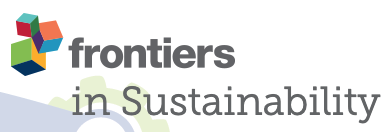
 Fernando M. Reimers
Fernando M. Reimers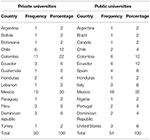
0 Comments